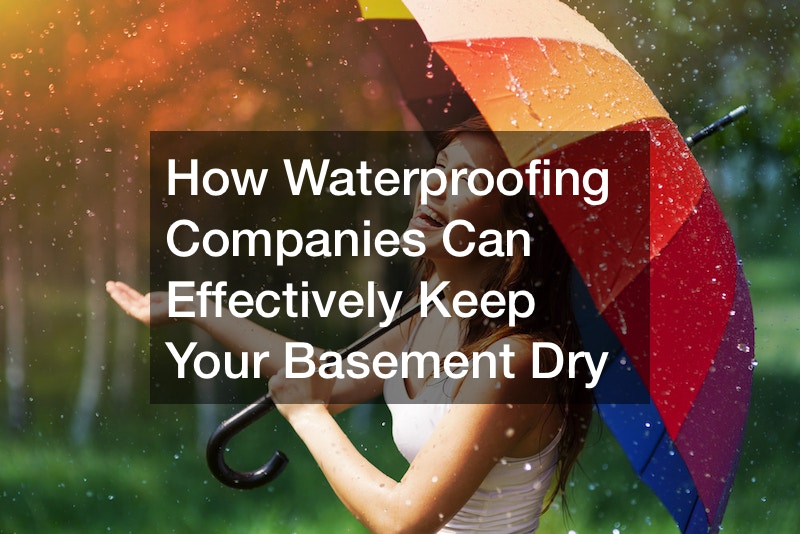
There’s no end to the horror that water damage can cause to your home. That’s why you need to look at the waterproofing companies in your area and pick the best one. They should know the best waterproofing agent to use that’s going to give you the best results and protect your home from water damage. Ask them about things like the benefits of water resistant flooring vs waterproof covers and such. Their response should give you an idea of how qualified they are.

You should also do some research of your own so that you have an idea of the best stormproof water repellent, for instance. Also, check to see the details of water resistant vs waterproof flooring so that you know what’s the best recommendation in this regard. This is bound to make it easier for you to get through the process well. You’ll know the right questions to ask and also have a good idea about some terms and phrases that you might come across.
The more you know, the easier it will be for you to keep your home safe from water damage. You’ll also know the most cost-effective solutions so you can keep your home safe and dry without breaking the bank.
If you’re a homeowner, there’s one scenario you probably dread every single spring. You make it through winter and go down to check on your basement only to find that the spring thaw has put several inches of standing water in your basement.
It’s a situation every homeowner hates to experience, but with full basements, it usually happens a lot. Of the three types of home foundations—full basements, concrete slabs and crawlspaces—full basements, full basements are built below grade, so they tend to take on water.
Even if your basement doesn’t flood all the time, there’s still potential for flooding. How does it happen? Over time, cracks can open up around your home’s foundation and the soil around the foundation can become soaked with water. When that soil becomes saturated, water gets through any opening it can find whether it be cracks, holes or elsewhere. When that happens, water comes through your basement walls and water gets in the basement, soaking everything in its path and potentially creating mold and mildew issues down the line.

So what can you do to prevent flooding and costly basement repairs? You can waterproof your basement walls and your basement. Here’s some helpful dos and don’ts:
- DO—Find the source of leaking: The first thing you need to do as you take on this project is to find the source of the flooding in your basement. Look for wet streaks in your concrete, look for cracks, check around your pipes and check around your mortar joints. Don’t forget to check along the walls of your basement to determine whether or not the leaking is coming from the outside of your home or the inside of your home.
- DO—Use cement to seal cracks: As you check for cracks and other places where water might be coming in, you’re more than likely going to find them at the bottom of your basement’s walls. What happens is cold joints develop where there are weak spots in your foundation, caused by shifts and pressure points. Luckily, hydraulic cement can easily fill cracks around your basement. How is this possible? Hydraulic cement had additives that expand rapidly and set. It makes a sort of putty when hit with water and ultimately it seals the cracks and keeps water out.
- DON’T—Go fast: If you’re waterproofing your basement, you’re doing so because you want to keep the water out. But in the waterproofing process, don’t get ahead of yourself. If you’ve got standing water in your basement, get rid of that first. You don’t want to get electrocuted as you work. Get a utility pump and get the water out and turn off all power to your basement. Once those two things are done, you can get on with the rest of it. Rushing is going to get you nowhere and could result in costly basement repairs.
- DON’T—Forget to take care of your windows: During the basement waterproofing process, it’s easy to focus on your basement walls and floors and any other parts as you focus on keeping water out. One area you don’t want to forget is your windows. Believe it or not, window wells are a common source for leaks because they easily retain water without a proper drainage system. Without one, water can easily pool up around your windows and get into places it doesn’t need to be, leaving you to make or pay for costly basement repairs. You can caulk around your windows to help waterproof them and you can also dig your window wells a little deeper to allow for better dispersal of rain water.
- DO—Waterproof your wall interiors: If you’ve done some detective work and found that water is coming in through your basement walls, you can fix this by sealing the interior of those walls with some kind of waterproof sealant or paint, which will form a tight bond to keep the water out.
Following the steps listed above, you’ll be able to effectively waterproof your basement, keep your basement dry and avoid any costly basement repairs, foundation repairs or surprises when next spring rolls around. That way you can enjoy your basement and avoid placing a call to a foundation contractor or basement waterproofing company.

